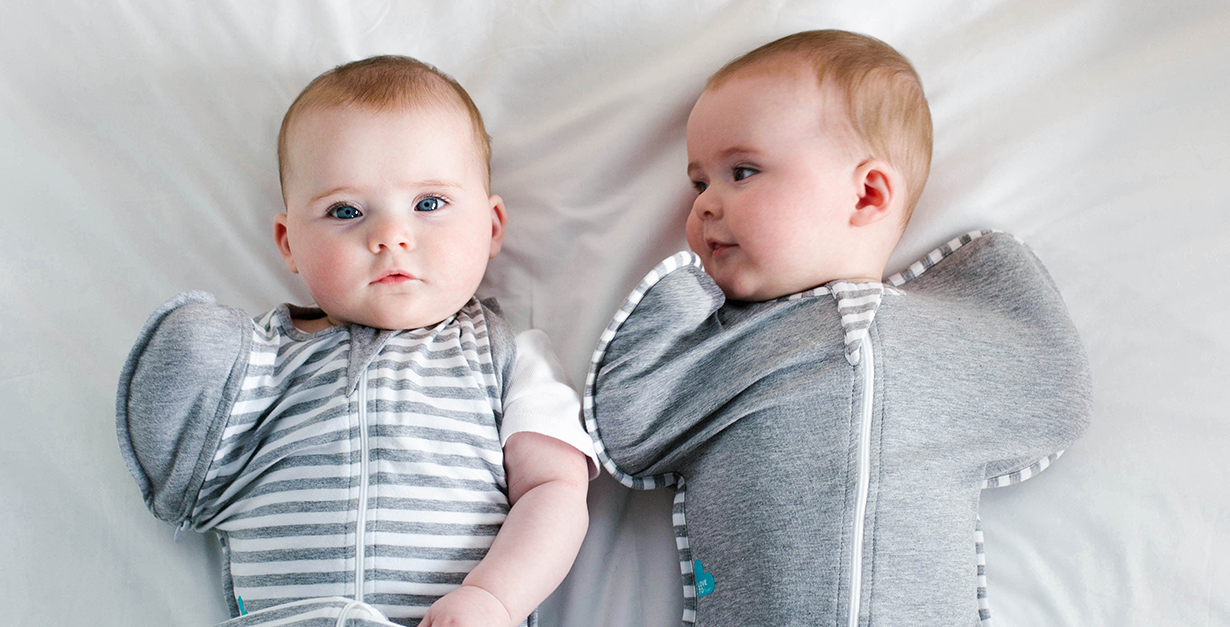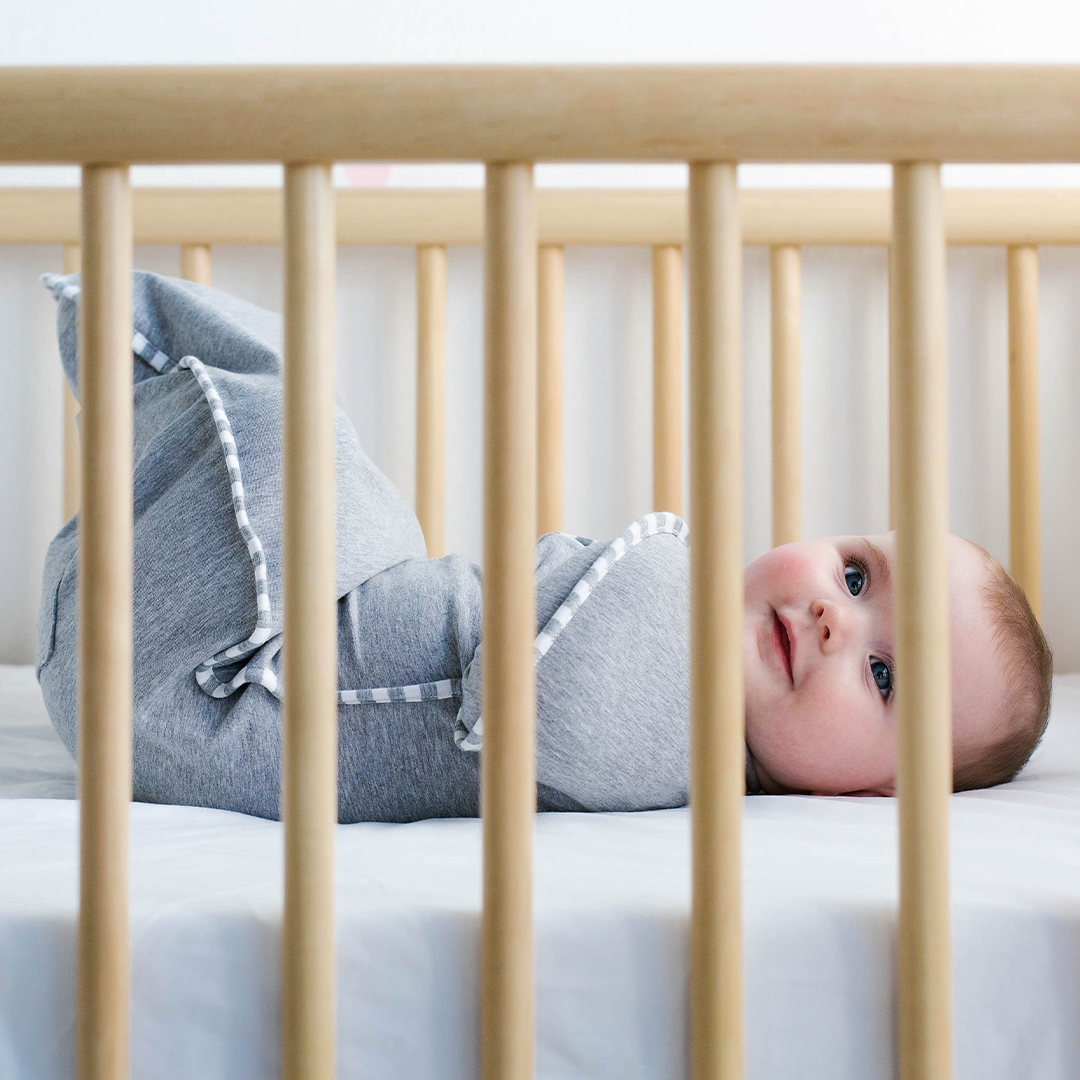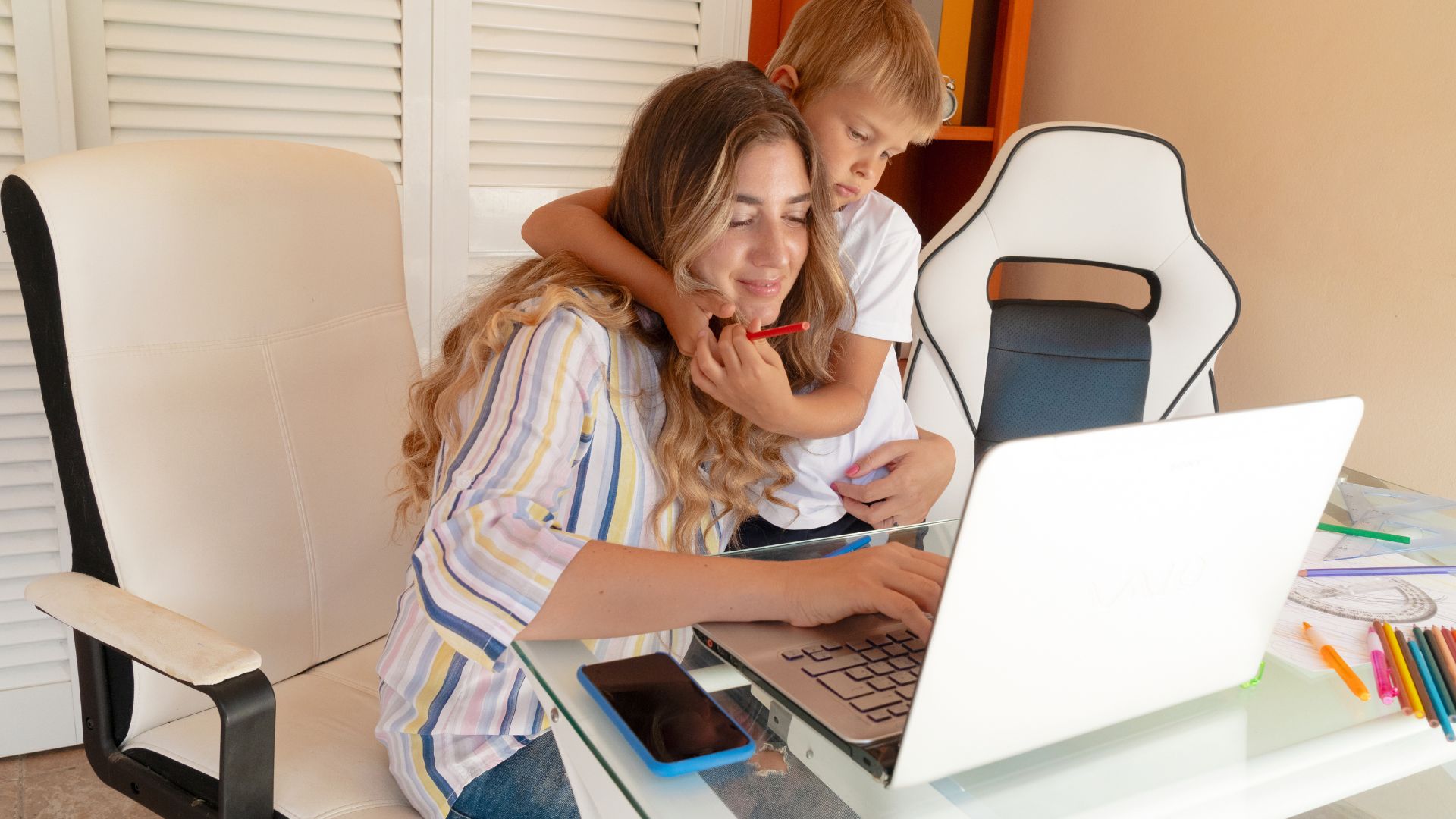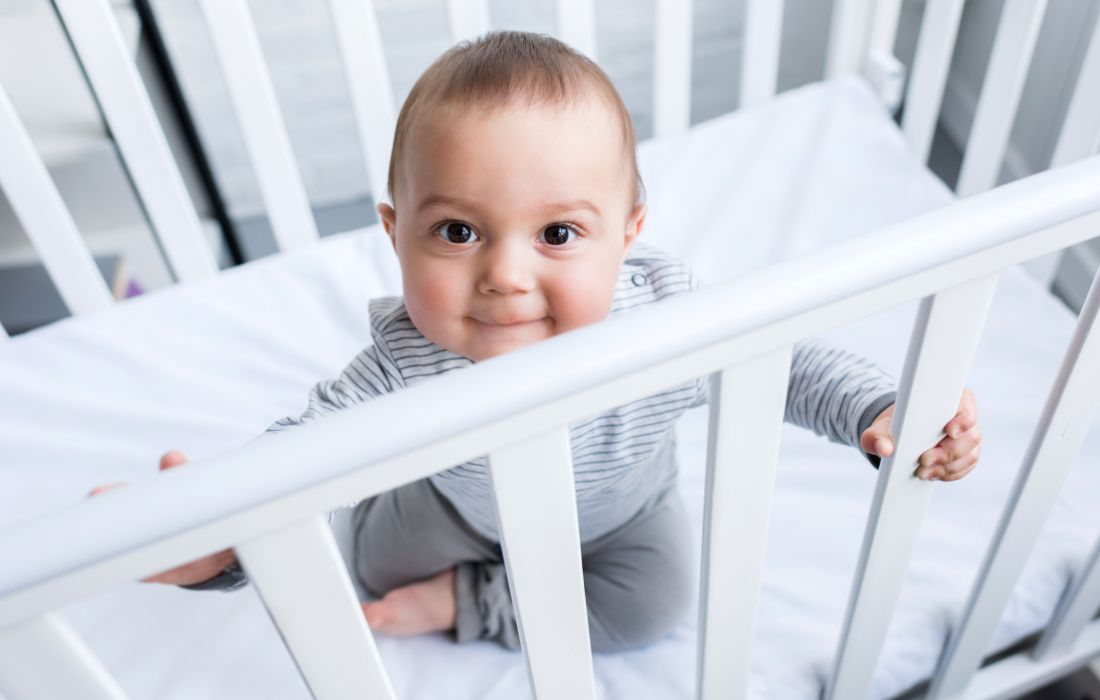Hands-Up! Swaddling With LoveToDream SwaddleUP
The topic of swaddling brings up so many questions from parents. Should I? What if my baby doesn’t seem to like it? When do I stop? How do I transition my baby out of a swaddle?
Did you know that in Canada they no longer swaddle babies in the hospital? There is talk about that spreading to the US. Luckily, one company has put in extensive research and developed a product that answers all of those questions.
I sat down with Hana-Lia Krawchuk, founder and owner of the LoveToDream three-stage swaddle and sleeping system. Her Australian-based company makes a unique infant to toddler sleep system in the following stages:
Stage 1– Swaddle Up for 0-4 months
Stage 2– Swaddle Up 50/50 for 4-8 month-olds and transitioning out of swaddling
Stage 3– Nuzzlin and Inventa Sleep Bag for 4-36 months for independent sleepers
 The beginning
The beginning
Kim: I have had the lucky opportunity to get to know you, but can you tell our readers a little bit about your background?
Hana: It started about seven and a half years ago, when my son was born screaming and didn’t stop. My husband and I didn’t sleep more than 45 minutes. He would always wiggle out of the swaddle, and the blanket ended up on his face. It was really stressful and unsafe.
One of the nurses in the hospital had said, “don’t swaddle arms-down, swaddle arms-up.”
My background is in fashion and textile design. I have always loved creating beautiful garments. So, I started designing a swaddle. It began like most wraps, with Velcro, but that was complicated. I came up with a design that was much simpler and easier to use. It has beautiful little wings for the arms to point up, and all you need to do is put it on, and zip it up.
Benefits of the arms-up, zip-up swaddle design
Kim: I see that SwaddleUP is tighter around the torso to put some pressure there, snug on the arms, and loose in the hips and legs. The arms are pointed up, which is different than a traditional swaddle. Tell us about that.
Hana: If you Google “baby sleeping”, all of the photos are of babies on their backs, because that’s the position they need to be in to reduce the risk of SIDS. They are all asleep with their arms up in the air. It is the natural sleeping position for babies.
The AAP did a study on swaddling, and they found that it helps babies sleep longer. They sleep even longer than that if they have access to their hands. And, leading occupational therapists say you should swaddle with access to the hands to rub cheeks or suck on hands to self-soothe.
Kim: Once they learn the motor skills to get their hands to their mouths?
Hana: Yes. They develop proprioception, which is awareness of the body. Gentle pressure to the body activates that—like a hug that is soothing—swaddling does that for babies.
Other reasons to swaddle
Kim: I have read that mom should breastfeed and swaddle afterwards. With the SwaddleUP, can they have access to mom?
Hana: There is bonding that occurs with skin-on-skin time. But all you have to do is unzip and you have access.
Kim: We should talk about one of the other reasons for swaddling, the Moro reflex.
Hana: Yes. The Moro, or startle reflex is present in all babies and is important for survival. For centuries people have been wrapping babies to suppress this, but it’s important that they be able to rouse from deep sleep. The SwaddleUp helps calm that reflex, but not eliminate it altogether.
Kim: What is a really common swaddling question parents ask you?
Hana: “Do all babies like swaddling?,” is one we get. Babies don’t necessarily like their arms pinned to their body. We say to try SwaddleUp, and if they don’t like it, give it a rest for a bit, and try again. We virtually guarantee they will eventually love it.
 Safety and functional features
Safety and functional features
Kim: In a traditional swaddle, arms-down, if a baby somehow rolled or escaped from the blanket, there would be some safety concerns.
Hana: LoveToDream fastens with a zipper. If it is done up properly it can’t come off. No matter how good you are at swaddling, at some point your baby is going to force out of there and end up with a blanket on their face or mouth. This one is tight on the waist, and helps reduce the risk of riding up over the chin and mouth.
The other safety feature—if they try and roll to their tummy—the arm and elbow up help stop them. If they somehow roll, they have access to their hands to try and push down.
Kim: We are going to talk about transitioning out in a bit, but first, what other features does the Stage 1 (infant) SwaddleUP have?
Hana: Well, you don’t want to overheat your baby. If you’re using a traditional swaddle blanket, you can have as many as eight layers of wrapped blanket. It’s also hard to tell how hot the baby is because you can’t get in there, and you really need to touch the chest or tummy to tell if they are too hot—babies don’t have the best circulation in their hands and feet.
Our product is one layer with a zipper. It comes in three weights: summer, transitional, and winter. We have a handy guide on the back of the package to tell you what weight you need. Generally, you want to dress your baby in what an adult would wear, and one additional, thin layer.
Kim: Are there any other unique features of the SwaddleUp?
Hana: Well, the full zipper allows for quick nighttime diaper changes without waking the baby. We also have a slot in the back for securing the baby in a stroller. We’re the only company that has that. But please, this is not for carseats, just stroller straps.
Safety tested
Kim: Safety is always a concern and of the utmost importance to parents. Any other comments on safety?
Hana: I love talking about the safety testing. I am really passionate about product safety. Every baby who wears SwaddleUP is my responsibility. Fabrics are tested—every batch runs through rigorous testing for presence of harmful chemicals. We use natural fibers—mostly cotton and a little elastaine for stretch.
We export to 29 countries and comply with all safety standards for those countries. You are getting the best quality product we can make. We also have over 40 different in-house tests—we go over and above to make sure the product is safe as can be when it comes out of the factories. I am very proud of that.
Recent recommendations around swaddling say to make sure their legs are not swaddled together. That can contribute to hip dysplasia. Babies should be in a natural, frog-legged position, and we’ve taken care of that because it’s wide at the hips.
Kim: Thanks for doing all that for us! One more safety question we have is about sizing. You make a few sizes—how can parents tell what size to buy?
Hana: There is a great sizing chart on the back of the package and on the website. It’s really important to buy the right size for safety, and we pay attention to weights more than heights. We have everything from an XS for really tiny babies, a Small for 6.5 pounds, all the way to 24 pounds. Please don’t move them to the next size until they meet the minimum weight—you need to be sure the neckline and wings are snug.
Transitioning out of the infant swaddle
Kim: We have talked about swaddling and safety, but let’s talk about when swaddling isn’t safe anymore and how to transition out of the swaddle.
Hana: Rolling is a pretty big milestone for babies. They start rolling at anywhere from three to six months in a full-term baby. And we get questions about direction—rolling is rolling. Once they start showing signs of rolling, they need out of the swaddle for safety and development.
Kim: I think that it’s important to have lots of tummy time to help develop coordination and muscle strength to lift the head and chest. The average age for a baby to start to roll is between 3-6 months in full-term babies, which coincides with sleep architecture changes as they begin to have deeper sleep. Rolling cues us as parents to stop swaddling. But we want to transition them gently.
Hana: Yes! And we have the SwaddleUP 50/50. It starts out just like the Stage 1 SwaddleUP, but the wings zip off one at a time. Then they get used to one—that can be a minute or a few days or longer. Then you take off the other and voila! Transitioned out of swaddling. They still end up in a snug-fitting sleeping bag, so they still feel the sensation of swaddling. Much easier than not swaddling. Here’s a short video of that.
Kim: One thing you said to me that’s in line with my gentle approach to sleep, was that for sensitive babies you can take off the wing when the baby is sleeping.
Hana: Some babies are more sensitive to change. If they are resisting, put the baby to bed. Stay in the room to make sure they are safe, and when they fall asleep, gently remove the wing.
Independent sleepers
Kim: When babies are done with full swaddling, and they are too large for the 50/50, do you have anything else?
Hana: Stage 3 is for independent sleep. It’s a zippered sleep sack, and like the others, it is sized so that it doesn’t bunch up around their face. It comes in summer and transitional weights, and has zippered vents for cooling. The lightest one even has an adjustable bottom for length!
Kim: Wonderful! So if you were to sum up your main points of safety and features of the SwaddleUP line, what would they be?
Hana: I would say,
- Arms-up position is great for self-soothing
- Transition at the first sign of rolling, likely 3-6 months
- Please don’t put anything in the crib at all—blankets, toys, bumpers, etc. They can’t keep them away from their face before one year.
- Don’t overheat your baby.
- Enjoy your babies!
Kim: Thank you so much!
LoveToDream products have been safety-tested and lovingly crafted to include covered zippers, non-irritating seams, stroller compatibility, and air vents. They are made from natural fabrics with a bit of stretch, and tested to make sure there are no harmful chemicals or inside edges that can irritate baby’s skin.
The products are available in stores and online, including www.Lovetodream, Target, Buy Buy Baby, and Amazon.






 The beginning
The beginning Safety and functional features
Safety and functional features
